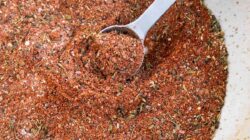Cuisine Deep-Dive: Lebanese
North of Israel and south of Turkey on the east side of the Mediterranean Sea lies the little country of Lebanon. Smaller in square miles than Connecticut, Lebanon has a savory, fresh cuisine inspired from the Ottoman Turks influence and the French control which took place after WWI until 1946. Lebanese cuisine is often lumped in the Mediterranean food category but make no mistake—it is bold enough to stand on its own.
The Basics
The basic tenets of Lebanese (also called Levantine) cuisine reflect abundance, freshness, and warm hospitality. When eating in a Lebanese kitchen, come hungry because cooking and sharing food is seen as an expression of love. The beauty of the meal is that it isn’t served in courses except for dessert at the end. All the dishes are on the table at the same time because everything is meant to be eaten together and combined as each diner chooses.
Certain tools are used to create Lebanese dishes making them easier to prepare:
- Manakra – Compared to an ultra-skinny apple corer, a manakra makes quick work of hollowing out zucchini and other veggies to be stuffed.
- Mortar and pestle – For authentic blending of herbs and spices
- Coffee grinder –dedicated to grinding spices
Common Ingredients in Lebanese Cuisine
- Rose water and orange blossom – rose water is a favorite ingredient used in Levantine baklava and made in villages with a special type of rose called the ward joury (Rosa Damascena). Orange blossom is used similarly to how we in the U.S. use vanilla and it is showcased in butter cookies or used to accent a fruit salad.
- Lamb – used in kibbeh, a type of croquette and the national dish. Lamb is ground and combined with cracked wheat paste and onions and stuffed with a spiced meat blend and then fried or baked. The real specialty is eating kibbeh raw which is almost a delicacy and the recipe varies according to family tradition. Another dish, kafta, also uses lamb and is shaped into sausages or burger patties and is barbecued, baked or fried.
- Eggplant – you can’t have baba ghanouj without eggplant and you can’t have a Lebanese meal without baba ghanouj. The creamy result of broiling an eggplant and blending It with tahini, garlic, lemon, salt, baba ghanouj is the perfect dip for pita and an accompaniment to schwarma.
- Figs – kitchens in Lebanon typically have a fig jam on their breakfast table ready for spreading on bread. Its heavenly sweetness is balanced by sesame and anise seeds and a touch of tart lemon.
- Chickpeas – the cornerstone ingredient for falafels and hummus
- Spices/herbs like mint, cinnamon, parsley, oregano, nutmeg, and allspice
Components of a Meal
- Meza/Mezza – similar to the Italian antipasto, the meza is comprised of small plates of dips, salads, pickled or raw vegetables, breads and marinated meats or seafood.
- Salads – picture fresh parsley loaded tabbouleh or a vinegary cucumber and pita dish called fatoosh.
- Meats – Chicken, lamb, beef especially used to make favorites like shawarma (spiced whole meat kabobs), kafta (ground meat patties or meatballs loaded with spices) and the aforementioned kibbeh. Not to mention, meats used to stuff thin grape leaves.
- Desserts – often fresh fruit based centered around figs, melons, apples, grapes, persimmons, and oranges. The Lebanese version of baklava was created in admiration of the Greek rendition but calls on rose water or orange blossom instead of honey.
Spotted and Seen
Semson (NYC): Entrepreneur and risk-taker, Christine Sfeir, brought Dunkin Donuts to Lebanon in 1996. Twenty-nine Dunkin Donuts later, Ms. Sfeir created the Lebanese fast-casual franchise Semson which she franchised here in the U.S starting in NYC. If Lebanon is ready for American donuts, it stands to reason that the U.S. is ready for franchised Lebanese food.
Badaro (Arlington, VA): Badaro is taking over the spot of a former pizza place and should be open in the fall of 2017 with plans for a few locations. With a quick service bent and a menu where customers create protein bowls and wraps using Lebanese inspired proteins and vegetables, Badaro is bringing the tastes of Lebanon to the South.
Beirut (Toledo, OH): One of the premier Lebanese restaurants in the Midwest, Beirut has been serving customers since 1977 and is famous for their chicken shawarma and stuffed grape leaves. Totally worth the stop if you’re in the area.
Got a Lebanese inspired application on your benchtop? Check out our real food ingredients that add umami and a rich savoriness. Our technical specialists are here to help from conceptualization and beyond.


